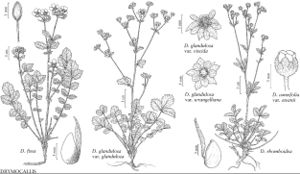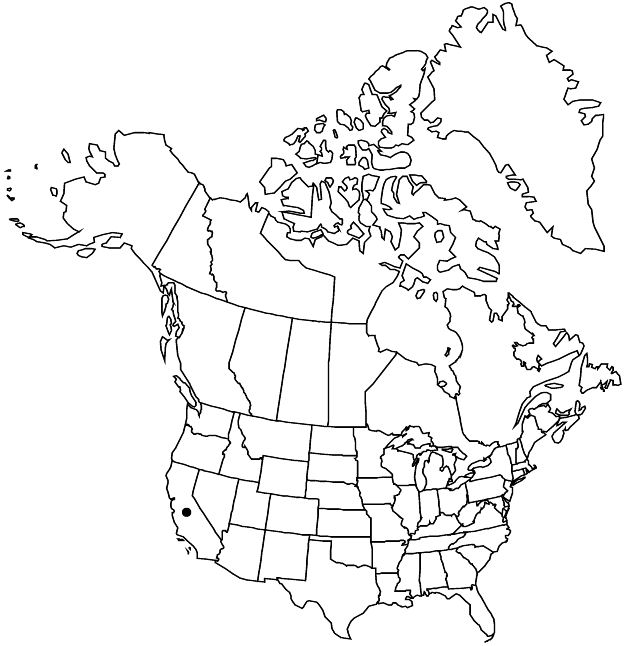Drymocallis glandulosa var. viscida
J. Bot. Res. Inst. Texas 1: 43. 2007.
Stems (1.5–) 2–6.5 dm, base 1–4 mm diam. Leaves: basal (3–) 6–20 cm, leaflet pairs 2–3 (–4), terminal leaflet obovate to rhombic-elliptic, (1–) 2–4 × 1–2.5 cm, teeth single or double, 4–9 per side, apex rounded to obtuse; cauline moderately developed, leaflet pairs 2–3. Inflorescences (2–) 5–30-flowered, not leafy, narrow, branch angles 15–30 (–40) °. Pedicels 2–10 (proximal to 20) mm. Flowers: epicalyx bractlets lanceolate-elliptic, (1.5–) 2–3 (–4.5) × 0.7–1.1 (–1.5) mm; sepals reflexed, 4–6 (–8) mm, apex obtuse to acute; petals reflexed, yellow, narrowly obovate-elliptic, 2–4 (–5) × 1.5–2.5 mm; filaments 0.5–1.5 (–2) mm. Achenes 0.9–1 mm.
Phenology: Flowering Jun–Aug.
Habitat: Moist openings, montane forest
Elevation: 1100–2500 m
Discussion
Variety viscida is provisionally resurrected to accommodate plants in the mountains of southern California that combine the flowers and vestiture of var. reflexa with the narrow inflorescences and frequently single-toothed leaflets of Drymocallis lactea var. lactea.
Selected References
None.
Lower Taxa
"thin" is not a number."wide" is not a number."dm" is not declared as a valid unit of measurement for this property."dm" is not declared as a valid unit of measurement for this property.

